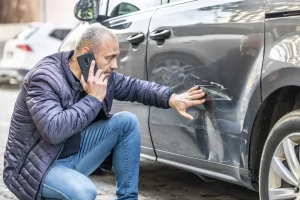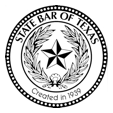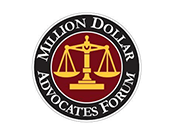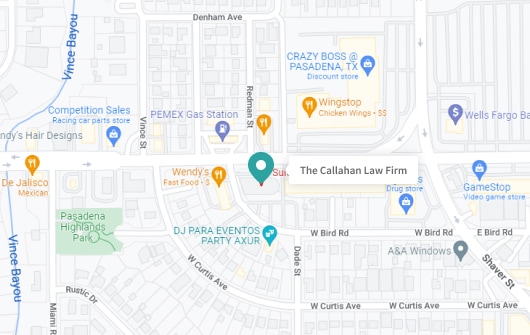Who is at Fault in a Parking Lot Accident When Backing Up?

Understanding the rules regarding parking lot accidents is crucial for resolving insurance claims and legal disputes. In most jurisdictions, a crash that occurs on private property is not governed by traffic laws and regulations. Instead, fault is usually determined based on traditional “rules of the road” and the principles of negligence. Determining who is at fault affects how damages are compensated between the parties involved.
Navigating the problems posed by parking lot accidents requires an understanding of the specifics involved in each case. Given the challenges in determining fault and the potential for significant legal and financial consequences, it is advisable to seek professional legal assistance. If you find yourself involved in a parking lot accident, contact The Callahan Law Firm today to schedule a no-cost consultation.
Common Types of Parking Lot Accidents
Parking lots can be chaotic environments with cars moving in all different directions, prompting the potential for a variety of accidents. Some of the most common parking lot accidents include:
Backing Up Collisions
Accidents caused by a car backing up are extremely common in parking lots. These occur when a driver reverses their vehicle into another car, object, or pedestrian. For example, two cars can easily collide when both are backing out of their parking spaces at the same time, or a car backing up can hit another car driving through the parking lot.
Entering Traffic Collisions
Parking lots intersect with roads and driveways, creating plenty of opportunities for collisions. Drivers sometimes fail to come to a complete stop, yield properly, or check for oncoming traffic when exiting a parking space. This frequently leads to T-bone crashes or sideswipes.
Competing for Parking Spaces
Finding an open parking space can be a competitive endeavor. Drivers may hastily try to pull into an open spot simultaneously from opposite directions. Aggressive or inattentive driving when hunting for parking often results in these types of crashes.
Rear-end Collision at Stop Sign
Rear-end collisions at stop signs in parking lots are a common occurrence, often resulting from driver distraction or misjudgment of stopping distances. These incidents happen when a driver fails to notice that the vehicle ahead has stopped or is slowing down to obey the stop sign. Despite usually occurring at lower speeds, these collisions can still lead to significant vehicle damage and personal injuries,
The dynamics of parking lot driving require heightened vigilance and careful maneuvering to avoid accidents. As these incidents can lead to complex disputes over fault and liability, obtaining legal guidance can be crucial.
Determining Fault in a Parking Lot Accident
When it comes to parking lot accidents, determining fault involves assessing the specific circumstances of the incident under general traffic rules and guidelines. Here’s how fault is typically assigned in different common scenarios:
Rear-end Accidents: Generally, the driver who collides with the back of another vehicle is at fault. This is based on the principle that drivers should maintain a safe distance from the vehicle ahead to allow for sudden stops.
Left-turn Accidents: The fault usually lies with the driver making the left turn. This driver is responsible for yielding to oncoming traffic that has the right of way, whether moving straight or making right turns.
Reversing Accidents: In most cases, the driver who is reversing is considered at fault. Drivers pulling out of a parking space must ensure it is safe to do so, watching for other vehicles and pedestrians.
Collisions while Taking the Same Parking Space: Fault can be more complicated to determine in these scenarios and often depends on who had the right of way. Typically, if one vehicle is significantly more into the space or if one driver acted aggressively or recklessly, that can impact fault determination.
In each of these situations, the specifics of the accident and the actions of each driver play critical roles in establishing fault.
Mitigating Factors to Consider When Assessing Fault
When assessing fault in accidents, several mitigating factors need to be considered. Weather conditions, for instance, can significantly impair visibility and vehicle control, thereby affecting a driver’s ability to react appropriately. Road conditions, such as potholes or uneven surfaces, as well as the absence of proper signage, can also play a critical role in causing accidents.
Vehicle malfunctions, like brake failures, might shift the fault from the driver to the manufacturer if they contributed to the incident. Additionally, malfunctioning or obscured traffic signals can lead to misunderstandings regarding the right of way, complicating fault determinations.
The Importance of Evidence in Determining Fault
The determination of fault in accident cases hinges significantly on the evidence gathered. This evidence clarifies the sequence of events and points to responsibility, making it indispensable in legal and insurance proceedings. Common types of evidence include:
Witness Accounts: Eyewitness testimony can provide critical details about the accident that may not be obvious from the physical evidence alone. Witnesses can describe the behavior of the drivers, the conditions of the road, and the sequence of events leading up to the accident, offering invaluable perspectives that help construct a factual narrative.
CCTV Footage: Video evidence from CCTV cameras has become one of the most powerful tools in accident analysis. This footage provides a visual record of the accident, capturing details like vehicle positions, movements, and the moment of impact. CCTV can confirm or contradict the accounts provided by drivers and witnesses, often serving as an unbiased observer of the events.
Other Available Evidence: Other forms of evidence include vehicle damage reports, which can tell how and where the vehicles were impacted, contributing to understanding the dynamics of the crash. Additionally, phone records, dashcam footage, and data from GPS or other electronic devices in vehicles can provide information on speed, direction, and driver behavior just before the collision.
Collectively, these pieces of evidence play a crucial role in accurately determining fault, ensuring that liability is correctly assigned and justice is fairly administered.
Liability in Parking Lot Accidents
Parking lot accidents raise questions about liability, which can be influenced by various factors, including the responsibilities of drivers and pedestrians, as well as the application of comparative fault principles.
Responsibilities of Drivers in Parking Lots
- Drivers in parking lots are expected to adhere to posted speed limits, yield to pedestrians in designated crosswalks, and maintain awareness of their surroundings.
- They must also exercise caution when backing out of parking spaces, ensuring that they do so safely and yield to oncoming traffic and pedestrians.
Responsibilities of Pedestrians
- Pedestrians have the right of way in crosswalks and designated pedestrian areas within parking lots.
- They are responsible for exercising caution and awareness, avoiding sudden movements or distractions that may lead to accidents.
Comparative Fault and its Impact on Liability
- In cases where multiple parties – like two drivers or a driver and a pedestrian – contribute to an accident, comparative fault principles may apply.
- Under comparative fault, liability is apportioned based on the degree of fault of each party involved. For example, if a pedestrian suddenly steps into a vehicle’s path while the driver is backing out of a parking space, both parties may share fault, impacting liability for damages.
Understanding the respective responsibilities of drivers and pedestrians, as well as the implications of comparative fault, is essential for determining liability in parking lot accidents and ensuring fair outcomes for all parties involved.
Legal Considerations and Insurance Coverage
Navigating the aftermath of parking lot accidents involves various legal considerations and insurance coverage options to address different scenarios effectively.
Dealing with Insurance Policies in Parking Lot Accidents
When involved in a parking lot accident, drivers must promptly report the incident to their insurance company and provide accurate details of the event. Understanding the coverage provided by their insurance policy, including liability, collision, and uninsured/underinsured motorist coverage, is crucial for determining how damages will be compensated.
Hit-and-Run Incidents in Parking Lots
Hit-and-run incidents in parking lots can be challenging to address, but drivers should still report the incident to the police and their insurance company as soon as possible. Depending on their insurance policy, drivers may be covered for hit-and-run accidents under uninsured motorist coverage, which can help offset repair costs and medical expenses.
Legal Actions for Accidents Caused by Poor Parking Lot Maintenance or Design
In cases where accidents are caused by inadequate maintenance or design flaws in parking lots, legal action may be pursued against the property owner or operator.
Understanding these legal considerations and insurance coverage options is essential for effectively addressing parking lot accidents and seeking appropriate compensation for damages incurred, like lost wages or pain and suffering.

Contact The Callahan Law Firm Today For a No-Cost Consultation
Parking lots are busy environments where accidents can happen unexpectedly. Being mindful of surroundings, adhering to traffic signs, and driving at safe speeds can help prevent accidents and ensure everyone’s safety. In the event of a parking lot accident, seeking legal guidance is essential for understanding your rights, navigating insurance claims, and pursuing compensation for damages.
For assistance in handling parking lot accident cases, contact The Callahan Law Firm. Our skilled Houston car accident attorneys are dedicated to advocating for your rights and helping you secure the compensation you deserve.
FAQ
Who has the right away when a car is backing up?
Pedestrians and other vehicles generally have the right of way over a car backing up. It’s crucial for drivers to yield to others and proceed with caution.
When backing up is it best to assume you always have the right of way?
No, it is not safe to assume you always have the right of way when backing up. It’s essential to check the surroundings carefully and yield to pedestrians and other vehicles to avoid accidents.
Who is more often found at fault if two vehicles crash when one is backing out of a parking space?
The driver backing out of the parking space is typically found at fault in such collisions, as they have a duty to yield to other vehicles already in the driving lane.
Is it always the fault of the car from behind?
No, it’s not always the fault of the car from behind in accidents. While rear-end collisions often lead to fault being assigned to the driver in the rear, there are exceptions. Factors such as sudden stops, vehicle malfunctions, or negligent actions of the front driver can influence fault determination.

Michael S Callahan is an attorney and founder of The Callahan Law Firm. He focuses his practice on representing individuals and families in personal injury cases involving motor vehicle and truck accidents, workplace accidents and defective products. With over 25 years of experience, he is dedicated to fighting on behalf of people whose lives have been forever altered by the negligence and carelessness of corporations and individuals. Originally trained as a mechanical engineer, Michael has been practicing law and fighting for justice for those who need it most since 1994. He is board-certified in Personal Injury Trial Law by the Texas Board of Legal Specialization and a member of various esteemed legal associations. Outside of work, Michael enjoys spending quality time with his family, outdoor activities, and continually striving to improve as a trial lawyer and human being.











